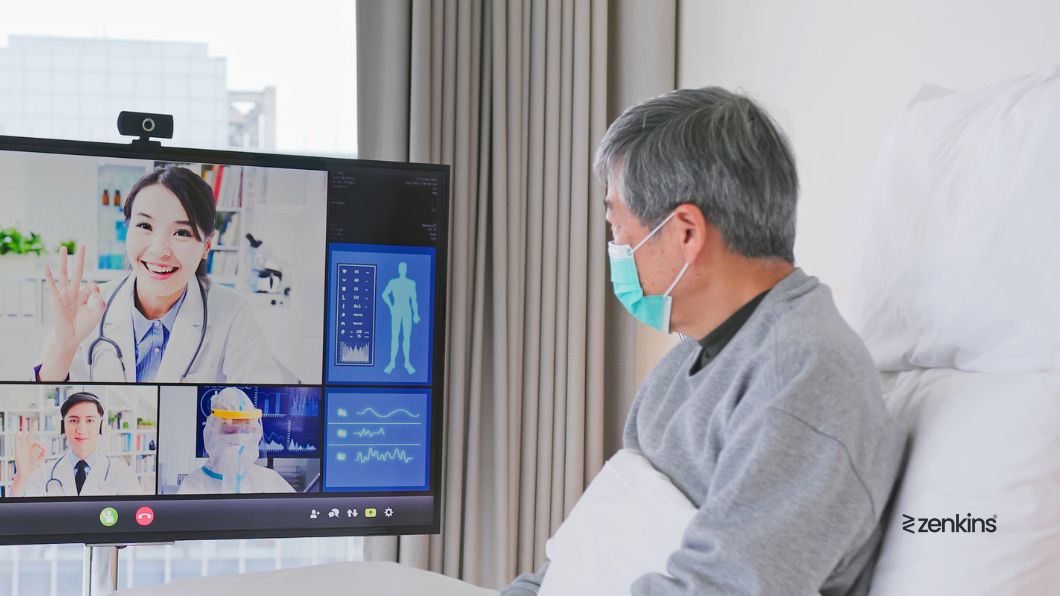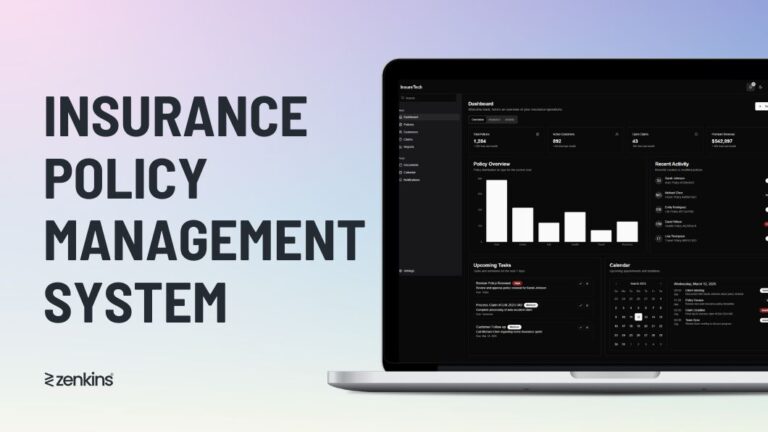Table of Contents
Telemedicine Platform for Remote Patient Care: A Case Study
Client Overview
The client, a healthcare startup, sought to develop a cutting-edge telemedicine platform to deliver remote healthcare services. Their goal was to offer seamless virtual consultations, monitor patient vitals in real-time, and integrate the platform with existing Electronic Health Records (EHR) systems. They required a scalable, HIPAA-compliant solution that could support thousands of users and expand with the company’s future growth.
Project Overview
Zenkins partnered with the client to build a Telemedicine Platform for Remote Patient Care using the Microsoft technology stack. The solution needed to support real-time video consultations, secure patient data management, and integration with existing healthcare systems, all while ensuring compliance with healthcare regulations like HIPAA. The result was a user-friendly and secure platform that facilitated remote healthcare delivery, enhanced patient outcomes, and streamlined communication between doctors and patients.
Challenges
Developing a telemedicine platform for healthcare startups involves addressing multiple challenges, including:
- Compliance with HIPAA and other healthcare regulations for securing patient data.
- Real-time data management, such as live video streaming, secure messaging, and electronic health records (EHR) integration.
- Scalability, to handle a growing user base of patients and healthcare professionals.
- Seamless User Experience, both for healthcare providers and patients.
- Integration with Existing Systems, including EHRs, to maintain the continuity of care.
The client required a solution that could address all of these challenges efficiently while maintaining high performance and user satisfaction.
The Solution
Zenkins delivered a comprehensive Telemedicine Platform using the Microsoft technology stack, which included:
1. Technology Stack
- .NET Core for backend development: Ensured a scalable and robust server-side application, handling real-time data processing, appointment scheduling, and secure messaging between patients and doctors.
- Azure Cloud Services: Used for hosting the platform and ensuring scalability, reliability, and security of data storage and processing.
- Azure API for FHIR: Enabled seamless integration with existing EHR systems, supporting the secure exchange of healthcare data using the Fast Healthcare Interoperability Resources (FHIR) standard.
- Azure Video Indexer and Media Services: Provided a secure, high-quality video consultation feature that allowed real-time doctor-patient interactions.
- Microsoft SQL Server: Used for storing patient information, appointment history, and medical records in a secure and scalable database.
- Azure Active Directory: Ensured secure authentication and role-based access control for both healthcare professionals and patients.
- Microsoft Power BI: Integrated for real-time analytics and reporting, enabling doctors to visualize patient data for better decision-making.
2. Key Features
- Real-Time Video Consultations: The platform enabled healthcare providers to conduct live, HIPAA-compliant video consultations with patients. Using Azure Media Services, the video quality was optimized for low-bandwidth environments.
- Remote Patient Monitoring: Integrated with IoT-enabled devices, allowing healthcare providers to monitor patient vitals such as heart rate, blood pressure, and blood sugar levels in real time.
- Secure Messaging: Built-in encrypted messaging allowed doctors and patients to communicate securely and share sensitive health data.
- Appointment Scheduling: Patients could book, reschedule, and manage their appointments through the platform, while doctors could manage their daily schedules seamlessly.
- EHR Integration: Azure API for FHIR allowed for real-time synchronization with existing Electronic Health Records, ensuring that patient data was up-to-date and accessible during consultations.
- Compliance with Healthcare Regulations: The platform was designed to be fully compliant with HIPAA, GDPR, and ISO/IEC 27001 for data security, ensuring patient data was protected at all times.
3. Development Process
Zenkins used an Agile development methodology, working in close collaboration with the client to deliver the platform in iterative sprints. This ensured flexibility and allowed for quick adjustments based on user feedback and evolving needs. The process included:
- Requirement Analysis: Identifying key features such as video consultation, secure messaging, and EHR integration.
- Architecture Design: Defining a scalable architecture using Azure services and .NET Core.
- Development: Implementing the solution in multiple stages with regular client feedback.
- Testing: Rigorous testing for security vulnerabilities, HIPAA compliance, and user experience.
- Deployment and Maintenance: Continuous monitoring and updates after deployment to ensure smooth operations and adherence to changing healthcare regulations.
Results
The Telemedicine Platform delivered by Zenkins provided the client with a highly secure, scalable, and efficient solution for remote patient care. Key outcomes included:
a) Enhanced Patient Care
The platform improved the accessibility of healthcare services by enabling remote consultations, allowing patients in remote or underserved areas to receive care without visiting a physical clinic.
b) Improved Operational Efficiency
The integration with EHR systems and appointment scheduling features reduced administrative burdens, enabling healthcare professionals to focus more on patient care and less on paperwork.
c) Compliance and Security
By ensuring HIPAA compliance and integrating advanced security features through Azure Active Directory, Zenkins provided a solution that met the strict regulatory requirements of the healthcare industry. Patient data was fully secured with encrypted communication and storage.
d) Scalability
The Azure-based platform could seamlessly scale to accommodate thousands of users, ensuring that the client could grow its user base without worrying about performance or infrastructure limitations.
e) Increased User Engagement
With features like real-time video consultations, secure messaging, and easy appointment scheduling, the platform increased patient engagement and satisfaction.
Conclusion
The telemedicine platform developed by Zenkins exemplifies the company’s expertise in delivering innovative, compliant, and scalable solutions for healthcare startups. By leveraging the Microsoft technology stack, Zenkins was able to create a robust and user-friendly platform that not only met the client’s needs but also exceeded industry standards for data security and regulatory compliance.
For healthcare startups looking to develop telemedicine or other remote healthcare solutions, Zenkins offers a proven track record of success, making them the ideal partner to bring your vision to life.
Interested in developing your telemedicine platform?
Contact Zenkins today to discuss how we can help you build a secure and scalable solution tailored to your healthcare startup’s needs.




